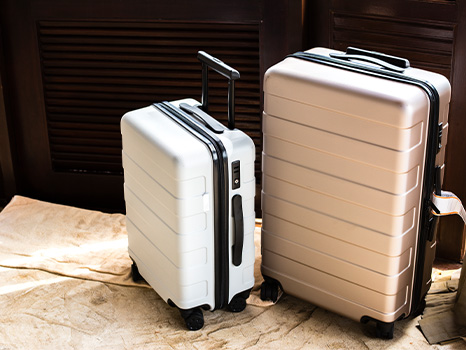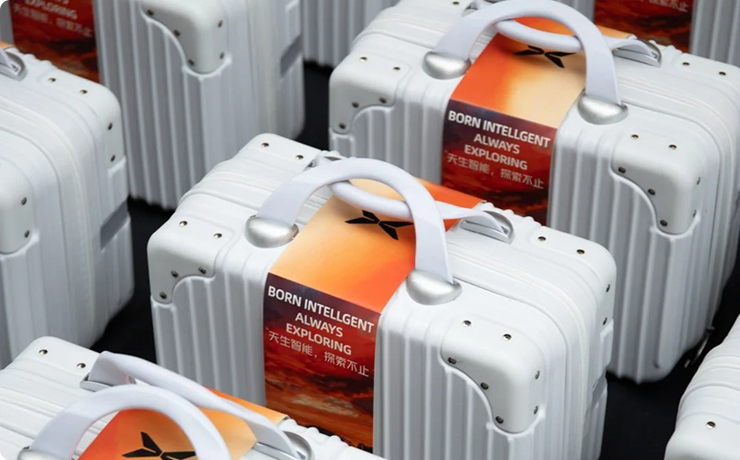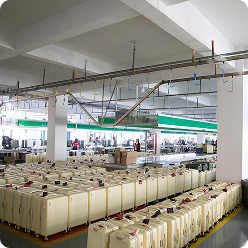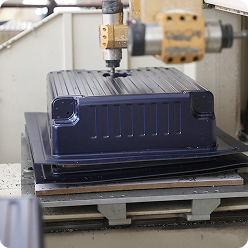Over the past decade, China's luggage industry has undergone profound changes from traditional manufacturing to innovation-driven development, and from domestic competition to stepping onto the international stage. During this period, it not only witnessed the continuous expansion of the market scale, but also the collaborative advancement of consumption upgrading, technological innovation and industrial structure adjustment. The following sorts out and interprets the development context of China's luggage industry in the past decade from the dimensions of market scale, product innovation, brand building and market competition, sales channel transformation and future prospects.
1. Market Scale: Steady Growth with Structural Differentiation
In the past decade, the scale of China's luggage market has shown a steady growth trend. According to data from market research institutions, the scale of China's luggage market was about 24.2 billion yuan in 2013, and climbed to 37.9 billion yuan by 2019, with a compound annual growth rate remaining in the range of 7% - 10%. Even under the impact of the epidemic, the industry growth slowed down from 2020 to 2022, but with the recovery of travel demand, the market scale rebounded rapidly in 2023, and is expected to exceed 45 billion yuan by 2025. Behind this growth is the joint promotion of the improvement of residents' income, the expansion of the tourism market and consumption upgrading.
In the process of growth, the market structure has shown obvious differentiation. The high-end market has a strong growth momentum, with an annual growth rate of about 15% - 20%. International brands represented by Samsonite and Rimowa, relying on brand accumulation, exquisite craftsmanship and cutting-edge design, firmly occupy the dominant position in the high-end market. At the same time, domestic brands such as 90FUN and ITO have gradually emerged in the high-end field through quality improvement and brand building, and their market share has steadily increased. In contrast, the growth of the mid-to-low-end market is relatively flat, with an annual growth rate of 5% - 8%. Competition mainly revolves around price and cost performance, and the problem of product homogeneity is more prominent.
2. Product Innovation: Material Innovation and Function Expansion
(1) Diversified Development of Materials
Over the past decade, luggage materials have changed from single to diversified. Traditional ABS plastic and nylon materials still occupy the mainstream of the market, but with the improvement of consumers' requirements for quality and environmental protection, high-performance and lightweight materials such as PC (polycarbonate) and aluminum alloy are increasingly used. PC material has become the new favorite in the hard case market due to its high toughness, impact resistance and good formability; aluminum alloy material is favored in the field of high-end business and travel cases because of its sturdiness, durability and high-end texture. At the same time, environmentally friendly materials such as recycled plastics and bio-based materials have also begun to enter the market, conforming to the global trend of green consumption.
(2) Intelligent Upgrading of Functions
The integration of intelligent technology has injected new vitality into the innovation of luggage products. In recent years, the intelligent luggage market has risen rapidly, and products with functions such as GPS positioning, intelligent weighing, USB charging and electronic locks have emerged continuously. The GPS positioning function solves the problem of lost luggage, making travel more secure; the intelligent weighing function helps users easily cope with airline luggage weight restrictions; the USB charging function meets the needs of mobile devices for charging at any time; the electronic lock improves the safety and convenience of luggage. In addition, some innovative products also have cutting-edge functions such as automatic following and voice interaction, bringing consumers a new travel experience.
3. Brand Building and Market Competition: The Rise of Domestic Products and Intensified Competition
(1) International Brands Dominate the High-End Market, while Domestic Brands Accelerate the Chase
Well-known international brands such as Samsonite, Rimowa and Tumi have long dominated China's high-end luggage market relying on their profound brand history, excellent quality and global marketing network. These brands focus on product research and development and design innovation, constantly launch new products that meet consumer needs, and consolidate their brand position through online and offline integrated sales channels and high-quality after-sales services.
In recent years, domestic brands have developed rapidly. 90FUN, relying on Xiaomi's ecological chain resources, with high cost performance, 年轻化 design and intelligent functions, quickly opened the market and ranked among the top in sales in e-commerce channels; ITO focuses on high-quality hard case products, and has established a good reputation in the mid-to-high-end market through precise market positioning and brand communication; in addition, domestic brands such as Level 8 and Diplomat have also gradually narrowed the gap with international brands through product innovation and brand building, and their market share has steadily increased.
(2) Diversified Market Competition, Segmented Markets Become New Battlefields
With the intensification of market competition, the competition pattern of the luggage industry has shown a diversified trend. In addition to the traditional competition in product quality and price, competition in brand image, design innovation, channel expansion and after-sales service has become increasingly prominent. At the same time, segmented markets have become new focuses for major brands to compete for. For different consumer groups and usage scenarios, differentiated products are launched. For example, lightweight, large-capacity and multi-functional business cases for business people; fashionable, durable and cost-effective student cases for students; foldable baby carriages and "baby-walking artifacts" with toy storage areas for parent-child families. Through precise positioning and product differentiation, brands establish competitive advantages in segmented markets.
4. Changes in Sales Channels: The Rise of Online Channels and Omni-Channel Integration
(1) E-Commerce Channels Become Growth Engines
Over the past decade, the rapid development of e-commerce has profoundly changed the sales pattern of luggage. Between 2013 and 2023, the proportion of online sales increased from less than 30% to more than 60%, becoming the main driver of industry growth. Comprehensive e-commerce platforms such as Taobao, JD.com and Pinduoduo attract many brands to settle in with their huge user traffic and convenient shopping experience; at the same time, social e-commerce platforms such as Douyin and Kuaishou have opened up new paths for luggage sales through new models such as live streaming and content marketing. The rise of online channels not only expands the sales scope of brands, reduces marketing costs, but also helps brands accurately grasp consumer needs through big data analysis, realizing product customization and precision marketing.
(2) Online and Offline Integration, Omni-Channel Retailing Becomes the Trend
Under the impact of e-commerce, offline physical channels are facing challenges, but they are also actively exploring the path of transformation. Brands have strengthened the experiential construction of offline stores, creating immersive shopping scenes by opening flagship stores and concept stores to enhance consumers' shopping experience. At the same time, the omni-channel retail model integrating online and offline has gradually become the industry consensus. Consumers can learn about product information and place orders through online platforms, and choose to pick up goods in offline stores or enjoy delivery services; offline stores serve as brand display, experience and after-sales service centers to support online sales. Through omni-channel integration, brands realize online and offline resource sharing and complementary advantages, improving operational efficiency and consumer satisfaction.
5. Future Outlook: Opportunities and Challenges Coexist
Looking forward to the future, China's luggage industry faces both opportunities and challenges. With the continuous improvement of residents' income level, the further expansion of the tourism market and the continuation of the consumption upgrading trend, the industry will maintain a stable growth trend. At the same time, technological innovation will inject new impetus into the development of the industry. Intelligent technology, new materials and environmental protection technologies will be more widely used in product research and development, promoting the intelligent, lightweight and environmental protection development of products. In addition, with the advancement of the "Belt and Road" initiative and the construction of the domestic and international dual circulation pattern, Chinese luggage brands will usher in a broader international market space, and the process of brand internationalization is expected to accelerate.
However, the development of the industry also faces many challenges. On the one hand, the competitive pressure from international brands continues to exist, and domestic brands still need to further improve in terms of brand influence, R&D investment and international market channel construction; on the other hand, factors such as fluctuations in raw material prices, stricter environmental policies and intensified competition in e-commerce platforms will also bring challenges to the industry's cost control, production and operation and market expansion. Facing opportunities and challenges, Chinese luggage enterprises need to increase R&D investment to improve product innovation capabilities; strengthen brand building to enhance brand international competitiveness; optimize channel layout to expand domestic and foreign markets; at the same time, actively respond to cost pressures and policy changes to achieve sustainable development of the industry.






